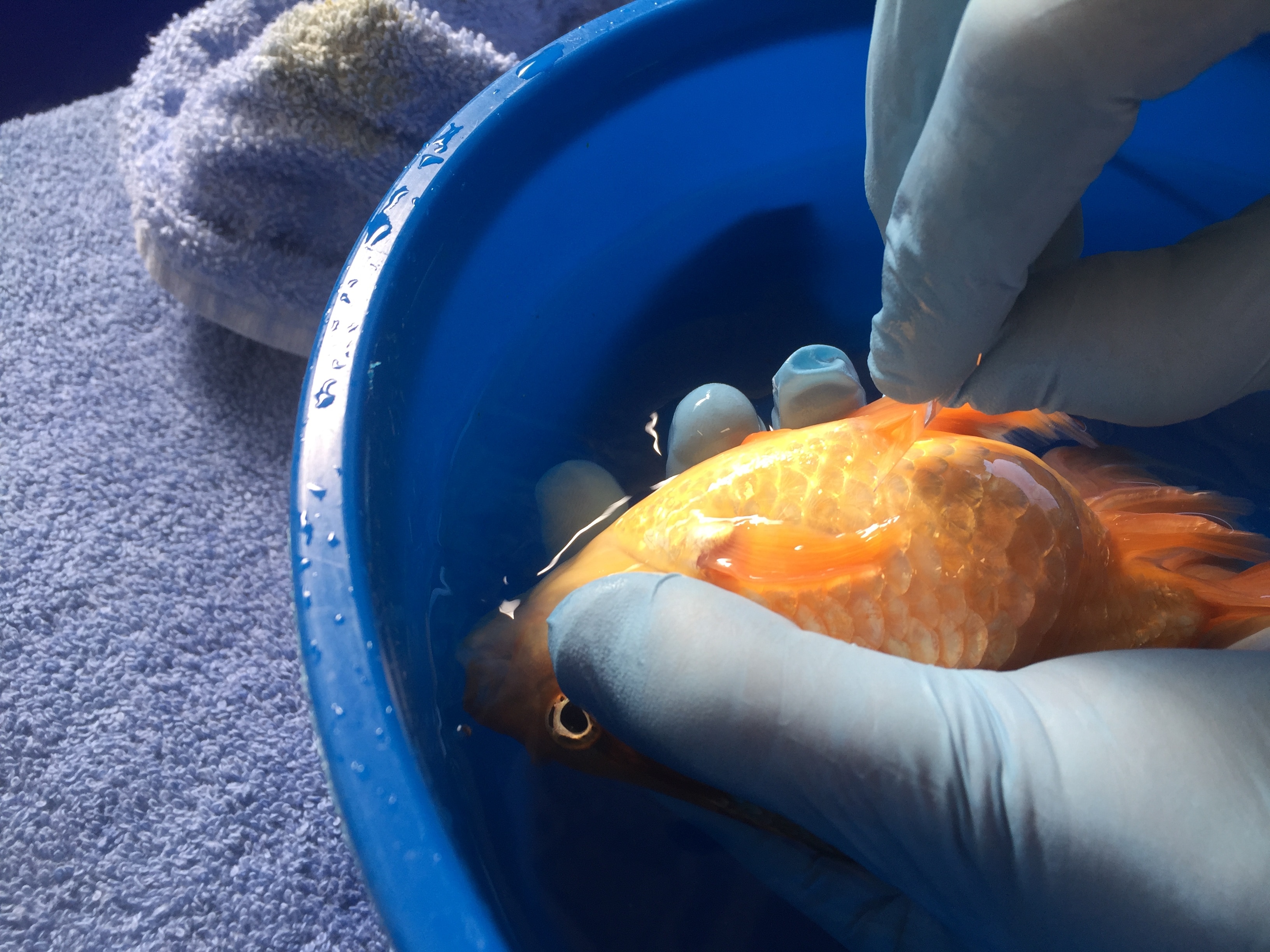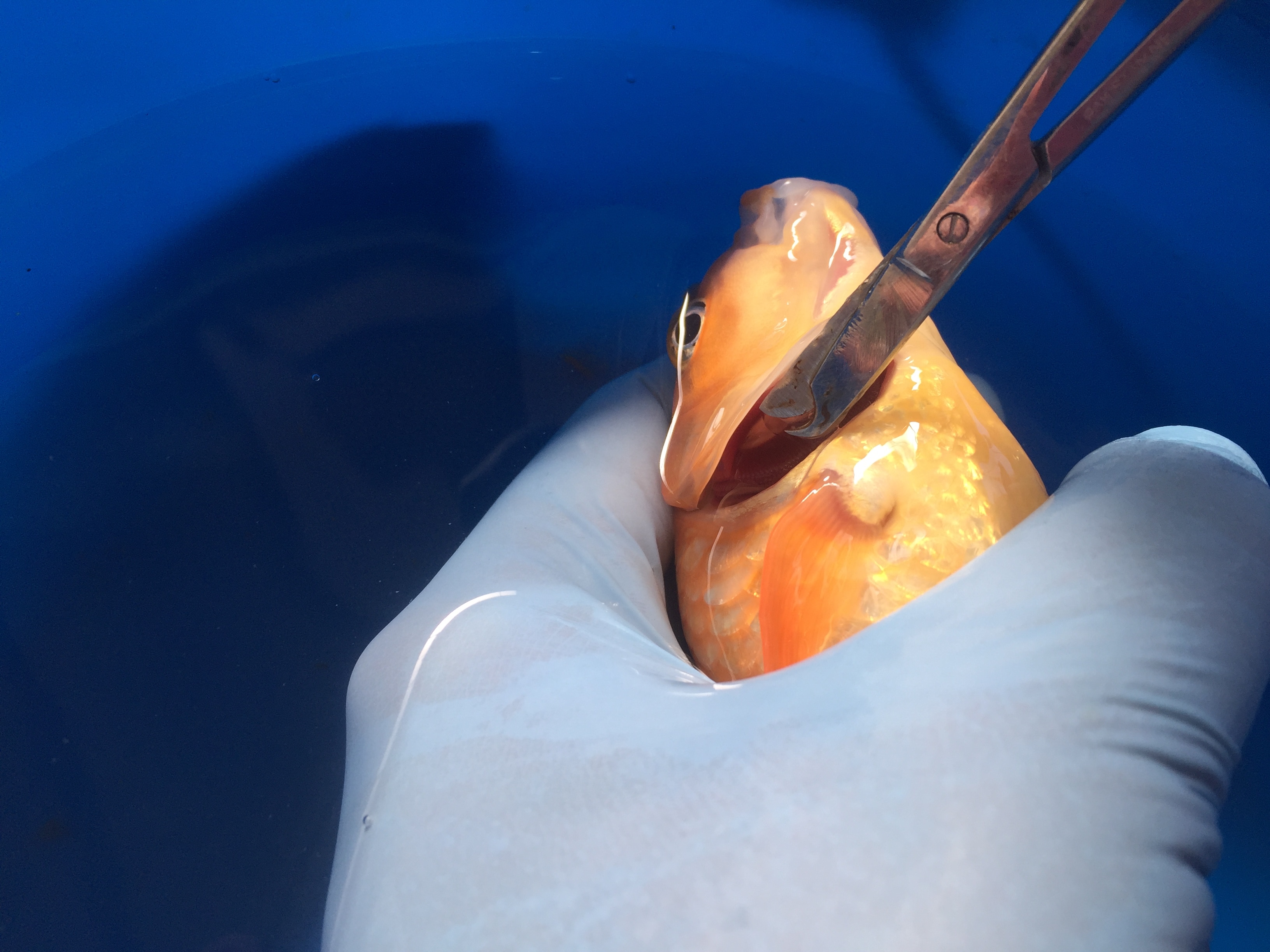3 Common Fungal Infections in Fish
What Are Fungal Infections in Fish?
Fungal infections in aquarium fish typically occur when a fish’s immune system is already weakened by illness or injury, and the fungus takes advantage of the change in their immune system.
Fish funguses attach superficially, meaning they don’t invade the fish’s body and stay on the surface on the skin/scales. Funguses in pet fish are most commonly caused by water molds, not true funguses. Water molds (fungi-like organisms belonging to the phylum Oomycota) are found throughout the aquatic environment and typically do not pose any threat to healthy fish.
Freshwater aquarium fish are more prone to fungal infections since most water molds do not like salt, however, there are a few water molds that can persist in saltwater.
Although rare, there are some highly aggressive true funguses, such as Branchiomycosis, that can cause primary debilitating disease in pet fish, mainly by affecting the gills.
If left untreated, fungal infections in fish can lead to death. If you notice any signs indicating a possible fish fungal infection, contact your veterinarian.
Types of Fungal Infections in Fish
Gill/Mouth Rot
Typical gill or mouth rot in fish is caused by the highly aggressive Branchiomyces spp. This fungus can be a primary cause of disease in fish but is relatively rare in pet fish species. Most external fungal infections are water molds, in which the fish’s body will look mottled or blotchy.
Egg Fungus
Opportunistic water mold can attach itself to various dead tissues, including skin, scales, and unfertilized eggs. Fish eggs that are not treated with formalin or hydrogen peroxide or do not hatch quickly can easily succumb to secondary fungal infections from their environment.
Fish breeding operations take special steps to clean and/or disinfect eggs immediately post-hatch to ensure they cannot be attacked by environmental fungus.
Systemic Fungus
Although rare, systemic fungal infections can quickly kill pet fish. Systemic fungal infections are more common in warmer water with higher density tanks. Clinical signs can include increased respiration, sudden death, lethargy and/or inappetence (not eating).
Symptoms of a Fungal Infection in Fish
-
White to brown raised, fluffy patches on body, eyes, fins
-
Pale gills
-
Increased respiration
-
Decreased appetite
-
Sudden death
Fungus on pet fish, including water molds, can appear as raised, fluffy or bushy growths on the skin, fins, gills and eyes. They are typically lighter in color and either tan or yellow-tinged.
Causes of Fish Fungal Infections
Fungal infections in fish are most common caused secondary to another stressor. This can include:
-
Poor water quality
-
Stress from aggressive tank mates
-
Injuries
-
Tank cleanliness issues
-
Dead fish in tank
-
Injured or old fish
-
Overcrowding
How Veterinarians Diagnose Fungal Infections in Fish
To diagnose a fungal infection in a fish, your veterinarian will do a full assessment of your tank or pond’s environment, including water quality testing and physical exams on apparently healthy fish for comparison. Be sure to bring a separate water sample for testing aside from your fish transport water and have a history of all water treatments and recently added fish or equipment.
Veterinarians will then take non-invasive scrapings and gill clips to examine under the microscope. Culture testing may need to be sent off to a lab for further diagnoses or confirmation of a fungal infection in your fish.


Treatment of Fish Fungal Infections
Effective treatment for fish fungal infections comes from treating stressors in the environment including:
-
Water quality
-
Diet
-
Overstocking
-
Aggression
Once these other issues are resolved, the fungus will resolve.
The most common treatment for fungus in freshwater fish is adding salt to their tank. Aquarium salt will need to be weighed out and added to your fish tank water for an immersive treatment. When performing water changes, you will need to add back in a little bit of salt with your new water to ensure your salinity stays up.
There is no medication currently effective at treating more aggressive strains of fish fungus such as Branchiomyces. Any infected fish should be humanely euthanized to limit the spread to other fish.
Recovery and Management of Fungal Infections in Fish
Once a fungal infection in a fish has been diagnosed, effective environmental management can lessen its severity. Pet parents can help their pet fish recover by:
-
Ensuring correct water quality
-
Maintaining a good quality diet (your vet can help you determine a diet best for your fish)
-
Managing any inter-species aggression
-
Avoiding overcrowding
Adding aquarium salt to 1-2g/L will help any infected fish heal better, deter fungal growth, and breathe easier.
Fish Fungal Infections FAQs
How do you treat fungal infection in fish?
The most common method to treat fungus in fish is a long-term salt bath added to your fish’s tank. Since many of these fungal infections are secondary to stress, it is important to also identify and remove the primary stressor.
How do I know if my fish has fungus?
There are a few things that may resemble a fungal infection in fish, including water molds, Columnaris infection, and dead bits of skin and/or scales, so a correct diagnosis by your veterinarian is the best chance your fish has for a full recovery.
Is fish fungal infection contagious?
Minor fungal infection have a low chance of transmission to other fish. Branchiomyces spp. infections have a high chance of spreading to others in the tank or pond.
What kills fungus in aquarium?
Fungus is always present the aquatic environment and cannot be removed completely. As long as your fish are healthy otherwise, they should not have much of an issue with fungal infections.
Can a fish recover from fungus?
If your fish is correctly diagnosed and treated, yes, they can recover from a fungal infection.
Featured Image: LordHenriVoton/iStick via Getty Images Plus
